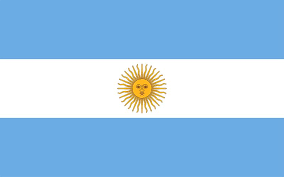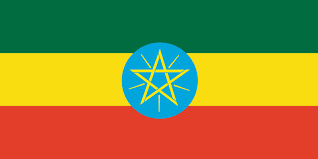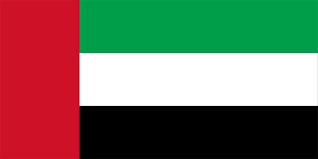The expansion of BRICS to include Iran, Saudi Arabia, Egypt, Ethiopia, Argentina, and the United Arab Emirates will significantly increase its economic and political clout on the world stage. The new BRICS will represent 46% of the world population, account for 29% of global GDP in nominal terms, and 37% of global GDP at purchasing power parity. This makes it a major force in the global economy, rivaling the Western-dominated G7.
The expanded BRICS is a significant global trade bloc and is likely to have a close relationship with the Shanghai Cooperation Organization (SCO), which focuses on regional security. The expanded BRICS platform effectively brings together an additional 69 countries through their lead relationships in organizations such as Mercosur, GCC, and COMESA. Additionally, three countries – Mongolia, Nepal, and Turkmenistan – that are members of the SCO but not of BRICS or other trade blocs, could also join the bloc in the future.
BRICS has always represented a major chunk of the global population thanks to China and India, which are the only countries with over 1 billion people. The two biggest populations being added to BRICS are Ethiopia (126.5 million) and Egypt (112.7 million). This means that BRICS will now represent 46% of the world population, up from 32% before the expansion.
It's possible that BRICS could eventually surpass 50% of the global population, as many more countries have expressed their desire to join. For example, Turkey has said that it is interested in joining BRICS, and Nigeria has also expressed its interest.
The expansion of BRICS is a significant development in the global economy. It will give the bloc more power and influence, and it could also lead to increased cooperation between BRICS countries on a range of issues.
Argentina

Egypt

Egypt is an energy and agricultural powerhouse, with important exports including petroleum and petroleum products, followed by raw cotton, cotton yarn, and textiles. Raw materials, mineral and chemical products, and capital goods are also exported. Among agricultural exports are rice, onions, garlic, and citrus fruits.
Egypt is a member of the Greater Arab Free Trade Zone (GAFTA). It is also a member of the African Continental Free Trade Agreement (AfCFTA), which is in the process of reducing tariffs to zero on 95% of all intra-African trade. Egypt is the largest economy in continental Africa. It is also a dialogue partner to the Shanghai Cooperation Organization (SCO) and the Gulf Arab countries.
Ethiopia

However, Ethiopia's northernmost region of Tigray is at the centre of a civil conflict involving ethno-regional militias, the federal government, and the Eritrean military. The conflict, which began in November 2020, has attracted the concern of humanitarian groups and external actors. Russia's Wagner Group is providing military support to the federal government, while the United States is backing the Eritrean militia. Ethiopia is also one of the fastest-growing economies in Africa, with a burgeoning middle class.
Iran

Despite the sanctions, Iran is a member of OPEC and is about to become a full member of the Shanghai Cooperation Organization (SCO). Iran has recently stated that it will link its energy supply chains to the SCO's electricity networks. It is also the main transit focus for the International North-South Transportation Corridor (INSTC), which links trade from Europe, Russia, Turkey, the Caucasus, and Central Asia to markets in East Africa, the Middle East, and South Asia. Iran has a free trade agreement with the Eurasian Economic Union (EAEU).
Saudi Arabia

Saudi Arabia is also a member of the Gulf Cooperation Council (GCC), a regional, intergovernmental, political, and economic union comprising Bahrain, Kuwait, Oman, Qatar, and the United Arab Emirates (UAE). The GCC currently has a free trade agreement (FTA) with Singapore and is negotiating FTAs with China and India.
Saudi Arabia is also a dialogue partner of the Shanghai Cooperation Organization (SCO) and has expressed its desire to become a full member. The kingdom signed a US$400 billion strategic investment plan with China earlier this year.
United Arab Emirates

The UAE's economy is highly dependent on the exports of oil and natural gas (40% of total exports). Other exports include pearls and other precious metals and stones (28%), machinery, sound recorders and parts (9%), and transport vehicles (6%). The electric vehicle industry is also becoming centered in part around the UAE. The UAE's largest trade partners are Saudi Arabia, Iraq, India, and Switzerland.
A Christian Perspective
As the BRICS partnership evolves, particularly in light of efforts to reduce dependency on the dollar, it holds promising implications for global missions.
At the core of BRICS lies collaboration, driven by political, economic, and security interests. Similarly, the church must adapt its approach to address not only the challenges within BRICS countries but also the worldwide mission field. It's a concern that in many instances, we become so program-driven that we lose sight of the fact that approximately 105 individuals perish every minute without encountering Christ's redeeming message in a way they can understand.
While sending pioneer missions remains valuable, it's no longer sufficient. What's needed is a collective effort, similar to the collaboration seen in BRICS nations, where resources are pooled and partnerships are forged. The essence of the Church lies in its interdependent global community, united by a shared vision, an open Bible, and a vast open map. However, this endeavor necessitates open-mindedness, exposure, and partnerships.
"TWINNING" isn't a new concept in global missions, but it has been somewhat neglected. Historically, missions operated as a one-way street with senders and receivers. The new paradigm is about developing partnerships, connecting churches with churches, and believers with believers. This shift breaks free from traditional limitations and allows all stakeholders to play equally significant roles.
The future of missions hinges on organic and relational partnerships between Christian groups and individuals. This transcends cultural and language barriers. We must work together, fostering cross-cultural partnerships that broaden the Church's vision and its impact on the world.
Gone are the days of merely giving and receiving in missions. TWINNING empowers both the giver and the receiver, enabling them to interchange roles. The Church, described as a living organism, is ideally suited to discover the joy of reaching previously unreachable cultures. This endeavor promises to transform both the Church and the lives of individual Christians, uniting them in a shared mission to reach the world.
If you would like to learn more about twinning churches and how it can be a powerful tool for spreading the Gospel, promoting Christian unity, and fulfilling the Great Commission, please do not hesitate to contact us.

